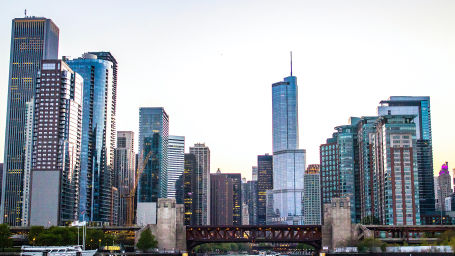

April 1, 2019 | Alison Barlow, Executive Director, St. Pete Innovation District

Fondly known as “The Sunshine City,” St. Petersburg, Fla., is in the midst of an incredible renaissance. Once known for its retirees and snowbirds, St. Petersburg now boasts one of the state’s youngest median ages, a world-renown arts sector and a tech start-up community that is growing by leaps and bounds—all thanks to a dedication to become a smarter city.
Intelligent inspiration
In 2015, the City of St. Petersburg and the Chamber of Commerce developed a joint economic development plan called Grow Smarter. To grow the economy, this plan outlined the critical need to focus on five key industries, including marine and life sciences. To illustrate, our community is surrounded by water on three sides prompting sustainability and resiliency of our coast as a critical concern. While geographically appealing to marine scientists, St. Petersburg couldn’t rely on the real estate mantra—location, location, location—alone. We also needed to become a place to incubate ideas and nurture entrepreneurs. Innovation is a mechanism to accomplish these goals—innovation inspired by the smart city tech within St. Petersburg.
St. Petersburg’s smart city journey is in its infancy. A smartphone application to pay for parking meters and another to report city issues have promulgated. Technology like this has helped us attract the largest collection of marine scientists in the southeast United States. These experts work only blocks from outstanding life science/health organizations. Our approach to innovation has brought together representatives from these organizations to investigate the intersection of ocean health and human health, generate new research and launch entrepreneurial ventures.
Smart stakes
We know we can do more to make St. Petersburg a smarter city. Smart lighting, intelligent traffic management, wayfinding, and autonomous vehicles slowly are coming and will be successful when seen as part of a daily routine. St. Petersburg’s partnership with Spectrum, a leading broadband communications company, and US Ignite, non-profit organization seeking to accelerate the smart city movement, affords the opportunity to explore what’s possible, leverage expertise and gain lessons learned.
Smart lighting was chosen as one of the first projects for our smart community efforts because it addresses several challenges. Near-term smart lighting will likely demonstrate tangible results in cost savings and increased public safety. Smart lighting also offers a way to explore more complex questions such as the aesthetics of a smart city—how does technology co-exist with the unique vibe and look of our community—and the ownership and sharing of data that the sensors generate. Finally, smart lighting was chosen because it is a tool that allows for the engagement of youth in reverse pitches and hack-a-thons about which sensors to employ to address community challenges and how to use the data that is generated.
This last criteria, engagement of youth, was important for the future St. Petersburg as a smart city. Three years from now, there will be dozens of smart city technologies deployed. Transportation-related capabilities will likely be the most visible arena including adaptive traffic management and autonomous vehicles. More of our youth and young professionals will be considering future occupations in data analysis, sensor development, and sensor installation and maintenance. Most citizens will not realize they live in a smart city but rather that they are part of a community that is adaptive, responsive and delivers on the promise that is a great place to live, work, learn and play.
To read more on smart lighting partnerships or how smart lighting can be implemented in your city, head here or sign up for updates.
Speak with a Spectrum Smart Cities Expert







